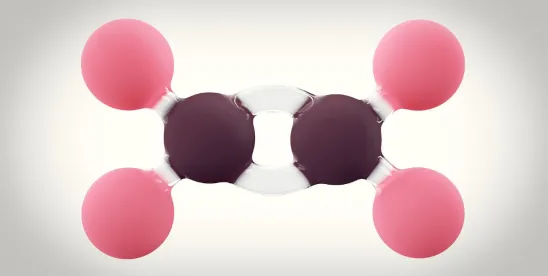The U.S. Environmental Protection Agency’s (EPA) commitment to its controversial Integrated Risk Information System (IRIS) value for Ethylene Oxide (EO) remains unwavering as two recent developments reflect. The first is EPA’s commitment to a process for conducting second risk reviews on air toxics as a way to resolve its longstanding dispute with its Office of the Inspector General (OIG) over the Agency’s regulation of EO. The second is EPA’s identification of the top 23 commercial sterilizers whose EO emissions allegedly contribute to elevated cancer risk in nearby communities, similar to the Agency’s 2018 list of 25 high-priority EO manufacturers and sterilizers.
While that commitment translates into immediate consequences for the sterilizer sector, it has longer-term consequences for industry. EPA’s new second risk review process commits the agency to review other air toxics following the same process it used to develop its IRIS value for EO. Yet, that process lacks any requirement for the Agency to consider input from stakeholders other than those within the Agency itself. Moreover, the process precludes judicial challenge at the time a risk review is undertaken, or the IRIS value is published – stakeholders must wait until EPA has “used” that value in a final agency action.
But an IRIS value itself has influence and substantial consequences well before the appeal of a final agency action becomes ripe. In the interim, EPA can – and with EO certainly has – move forward with a host of agency actions – like proposed rulemakings, public meetings, lists of high-risk facilities, and enforcement initiatives – which significantly impact industry, including by substantially increasing litigation risk.
Moreover, the science about the risks of EO is far from settled and new developments continue to unfold. For example, one fundamental flaw in the current EO IRIS value that is becoming clear is that it is orders of magnitude below naturally occurring ambient background levels in non-industrialized areas throughout the US. Setting a risk standard below naturally occurring levels, is, to say the least, strange; but it demonstrates what happens when real-life data does not corroborate a highly conservative model.1 If EPA views its process for reviewing the EO IRIS value as a “model” for other air toxics, industry should be prepared for similar scientific and legal wrangling for other focus constituents.
Eventually, the IRIS value will be subject to judicial review and EPA will be held to rulemaking standards under the CAA and will perhaps finally be required to defend the reasonability of its standard-setting. Presumably, at that point, EPA’s IRIS value can be finally vetted – but the damage to industry may well have been done, and the fears surrounding EO may be permanently ensconced in the public domain.
What Should I Do?
-
Industrial manufacturers and users of EO should continue to monitor developments related to EO and stay abreast of regulatory, enforcement and litigation trends – these have significant momentum and will remain highly dynamic.
-
Manufacturers of consumer products that contain EO (e.g., detergents, food, spices) should assess their regulatory and litigation risk for those products in the US and keep an eye on global trends (for example, in the European Union, where EO is highly regulated, certain products containing EO have been recalled). International trends can influence the domestic agendas in certain states and consumer groups.
-
Industry stakeholders should monitor developments associated with EPA’s work on IRIS values for other priority constituents. EPA is currently assessing IRIS values for 17 constituents. This fall, EPA plans to issue revised IRIS values for chloroform, chromium VI, and formaldehyde for public comment. Companies that manufacture or use priority constituents on EPA’s IRIS list should closely monitor developments and utilize the few available public participation opportunities to ensure that the administrative record reflects the full body of scientific literature and data.
EPA’s Second Risk Review Process
Earlier this summer, through a June 1 EPA memo and June 7 EPA OIG memo, EPA’s Office of Air and Radiation and its OIG resolved their years-long square-off over EPA’s regulation of air toxics, particularly EO. The last piece of skirmishing centered largely on the process of undertaking second residual risk reviews for sources subject to an existing NESHAP. In a March 31, 2020 memorandum, OIG had demanded that EPA formalize specific criteria for determining when to conduct second risk reviews, which EPA had resisted until now. Second risk reviews are not required under the CAA, and some industry observers believe they are unlawful.
In its June 1 memorandum, EPA outlined a compromise process that would involve working closely with the Office of Research and Development (ORD) and the IRIS Program and would include:
-
frequent meetings between EPA Office of Air Quality Planning and Standards’ (OAQPS) Health and Environmental Impacts Division (HEID) management and ORD’s Chemical and Pollutant Assessment Division (CPAD) management;
-
IRIS quarterly Agency-wide updates; issue-specific meetings between OAQPS/HEID and ORD’s Center for Public Health and Environmental Assessment (CPHEA);
-
working meetings related to specific issues, chemicals, or rulemakings; and
-
IRIS nominations by EPA Headquarters and Regional Offices with ORD follow-up meetings.
EPA also stated that a new IRIS value showing increased chemical toxicity would trigger a re-examination of existing NESHAPs. For ongoing NESHAP reviews, it would consider new IRIS data in those reviews. OIG accepted this compromise but encourages the Agency to conduct second risk assessments.
As outlined, the process would require substantial coordination among EPA offices and significant work by EPA. EPA repeatedly points to the example of its review and development of the revised EO IRIS value as the model for how the Agency will address second risk reviews for air toxics in the future. EPA then points to its core guiding principle that it ensures that “we use the most up-to-date toxicity information available for all hazardous air pollutants (HAP) regulated under the Clean Air Act (CAA).” See June 1 EPA Memo. But notably absent from this secondary risk review process is participation by state and industry stakeholders, any entity outside the Agency, or even its own Scientific Advisory Board.
EPA’s repeated reference to its model EO process is as ironic as it is troubling. As a threshold matter, the development and use of the EO IRIS value have been fraught with both procedural and substantive controversy and unresolved litigation. Members of the scientific community, industry, and several states claim the IRIS value is wrong and unsupported by the best science. Critics of the EO IRIS value argue that it excludes the “most up-to-date information,” including the State of Texas Effects Screening Limit (ESL) value. This value has been independently peer-reviewed and references newer studies showing that the EO is far less carcinogenic than projected by the IRIS value.
As outlined in our earlier alerts since releasing the EO IRIS value in 2016, EPA has failed to respond meaningfully to questions about the flaws in its methodology and data selection — even though it has relied upon that IRIS value in rulemaking and other Agency initiatives. Instead, EPA has argued that the Scientific Advisory Board supports the value – another group internal to EPA or dodged the comments altogether.2 Due to this regulatory rope-a-dope, the IRIS value has never been subject to judicial review.
Second, notwithstanding its flaws, EPA and others have treated the 2016 EO IRIS value as settled science, with far-reaching repercussions for industry. Relying on the IRIS value’s validity, several states have moved forward with new legislation and high-profile enforcement, including the closure of sterilizers amid a global pandemic.3 EPA has held numerous public meetings in which Agency officials have claimed that nearby EO facilities pose unacceptable risks to persons living near such plants; conducted surprise inspections; and issued one of the largest information collection requests in its history to EO manufacturers in an aggressive sprint to review its air toxic rules. Collectively, costs to EO users and manufacturers are already undoubtedly well into the hundreds of millions and increasing – all due to what many allege is a flawed IRIS value that EPA appears unwilling to subject to judicial scrutiny.
List of 23 Sterilizer Manufacturers
Yet EPA shows no sign of slowing down on its campaign to tighten regulation of EO or its reliance on its flawed IRIS value, and most recently, a refocus on the commercial sterilizer category. On August 3, EPA announced that it expects to propose an air pollution regulation for EO emissions from commercial sterilizers later this year.
EPA also published a list of 23 commercial sterilization facilities that purportedly contribute to an elevated long-term cancer risk for nearby communities. EPA now intends to hold a series of public outreach events, which began with an EPA-hosted August 10 webinar, to raise awareness in communities near commercial sterilizers. If past experience holds true, industry stakeholders should expect a charged atmosphere in public meetings and little (or no) opportunity to participate.
Importantly, EPA’s emphasis on these 23 facilities is the product of an information collection request (ICR) made in 2021 to commercial sterilizers to inform EPA’s risk assessment in areas near approximately 100 commercial sterilizers. Those facilities are now not only the focus of EPA rulemaking, public meetings and enforcement, they are also the target of state enforcement actions and toxic tort litigation.
EPA steadfastly asserts that its sterilizer agenda, like its second risk reviews, will be based on the “best available science.” Meanwhile, numerous contradictions to its IRIS value remain.
FOOTNOTES
[1] See, e.g., Ethylene Oxide and Terumo BCT, CO. Dep’t. of Pub. Health and the Env’t. (last visited Jul. 5, 2022); Ethylene Oxide Monitoring Report, GA. Dep’t. of Nat. Res. (May 12, 2022).
[2] In Re: National Emissions Standards For Hazardous Air Pollutants: Miscellaneous Organic Chemical Manufacturing Residual Risk and Technology Review 85 Fed. Reg. 49084, American Chemical Council (Aug. 12, 2020); Comments on EPA Proposed National Emission Standards for Hazardous Air Pollutants: Miscellaneous Organic Chemical Manufacturing Residual Risk and Technology Review. Docket ID No. EPA-HQ-OAR-2018-0746, 84 Fed. Reg. 69182, American Chemical Council (Dec. 17, 2019).
[3] See, e.g., Illinois SBs 1852 and 1854, Georgia HB 3, SBs 426 and 180, SC, Massachusetts MA H 921 . Plaintiffs’ lawyers have brought toxic tort law suits against EO users and manufacturers, citing to the IRIS value in pleadings. See, e.g., Bureau, et al. v. BASF Corp., et al., No. CIV 21-324-JWD-RLB (M.D. La. 2021), New Mexico, ex rel. Balderas v. Sterigenics U.S., LLC, et al., No. CIV 20-1355-KG-KRS (D.N.M. 2020); Abdelaziz v. B Braun Medical, Inc., No. 191201504 (Pa. Com. Pl. 2020).








 />i
/>i


